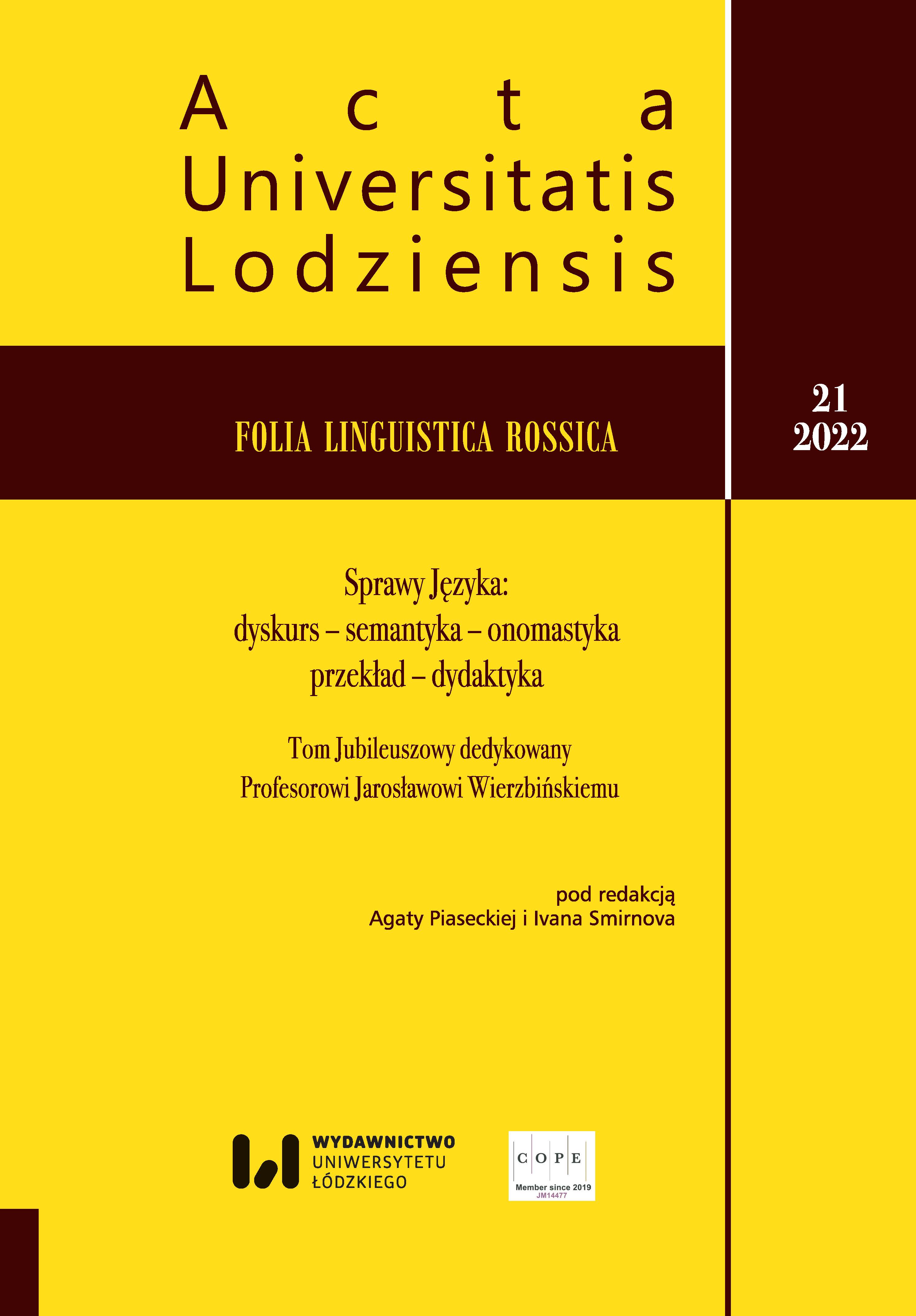A Brief Description of Samara Ergonyms
DOI:
https://doi.org/10.18778/1731-8025.21.06Słowa kluczowe:
regional ergonym, onomastics, proper name, national-cultural component, regional linguocultural projections, toponym, hydronymAbstrakt
The purpose of the article is to consider a specific group of ergonyms associated with the regional culture, history, development, and geolocation of the Samara region. The article is aimed at finding out the main characteristic features of the names of enterprises and organizations (ergonyms) in Samara.
The author uses descriptive comparative method. To provide the material and examples of ergonym, the methods of association, links and semantic map are used.
The provided description makes us think that the regional peculiarities of ergonyms are an essential part of the national-cultural component. It can be realized with the help of the realities associated with geolocation or specific features of the social, cultural, historical, ethnic development of a state and nation as a whole. It can be concluded that modern trends affect the ergonymic space of a city and its ergonymicon. The national-territorial component is capable of performing a parole function. There are certain ergonymic models associated with territorial identity, including abbreviations and acronyms, as well as contaminations of different types.
The analysis and the study results of Samara ergonyms are supposed to be a valuable material for investigation of proper names of enterprises, institution, firms etc. There are further prospects for studying a number of onomastic issues. The study results can be useful in solving brand and rebrand problems.
Bibliografia
Artemina, Yu.A. (2015). Functions of precedent phenomena in a literary text, Young scientist, 11 (91), 1553–1555.
Google Scholar
Golomidova, M.V. (2015). Urban design: to the question about the names of the local object, Problems of onomastics, 1, 186–189.
Google Scholar
Grigorieva, N.O. (2016). About projection culture: ergonomy in the communicative space of the city, The Dynamics of language and cultural processes in modern Russia, 5, 142–145.
Google Scholar
Khramkov, L.V. (2000). The choice of ways of social development, The history of the Samara Volga region from ancient times to the present day XX century (1918–1998) (96–118). Moscow: Nauka.
Google Scholar
Kryzhanovskaya, V.A. (2019). Quasi-motivation as a type of graphic transformation of an ergonym. Proceedings of the III International Symposium. In 2 volumes: Russian language in a multicultural world, 376–378.
Google Scholar
Nosenko, N.V. (2007). Ergonomy-contaminants: structure, semantics and features of functioning, Siberian journal of Philology, 2, 104–109, https://doi.org/10.17223/18137083/19/13
Google Scholar
DOI: https://doi.org/10.17223/18137083/19/13
Pitina, S.A. (2020). Ergonyms in the modern local linguistic landscape (based on the names of hairdressers), Bulletin of the Chelyabinsk State University, 12 (446), 89–93, https://doi.org/10.47475/1994-2796-2020-11211
Google Scholar
DOI: https://doi.org/10.47475/1994-2796-2020-11211
Podolskaya, N.V. (1988). Dictionary of Russian onomastic terminology. Moscow: Nauka.
Google Scholar
Prokofieva, T.O. (2014). Retro elements in the ergonymy of a modern provincial city: a fragment of the onomastic picture of Tambov, Bulletin of the Tambov University. Series: Humanities, 12 (140), 244–248.
Google Scholar
Rusanova, I.Yu. (2019). Problems of identification and description of the national-cultural component in the structure of the ergonym meaning. Materials of the XVII International Scientific Conference: Onomastics of the Volga region (95–99). Veliky Novgorod: Printing Yard.
Google Scholar
Shatalova, Yu.N., Medvedeva A.N. (2016). Naming in the regional aspect (based on the material of the names of grocery stores in Belgorod), Philological sciences. Questions of theory and practice, 5–1 (59), 167–171.
Google Scholar
Zamyatin, D.N. (2013). Geocultural branding of territories: conceptual foundations, Labyrinth: Journal of Social and Humanitarian Studies, 5, 11–23.
Google Scholar
Pobrania
Opublikowane
Jak cytować
Numer
Dział
Licencja

Utwór dostępny jest na licencji Creative Commons Uznanie autorstwa – Użycie niekomercyjne – Bez utworów zależnych 4.0 Międzynarodowe.









